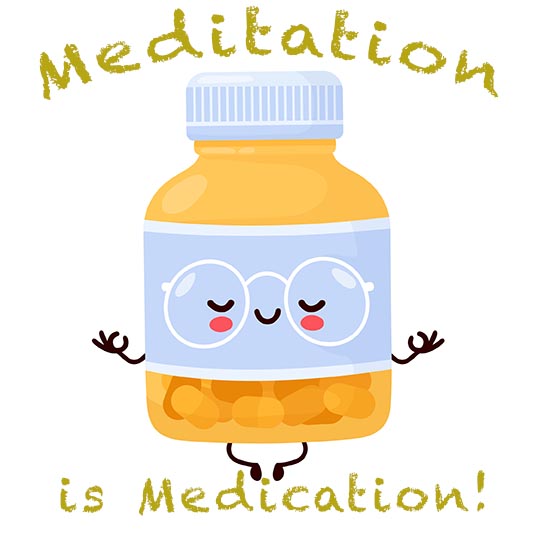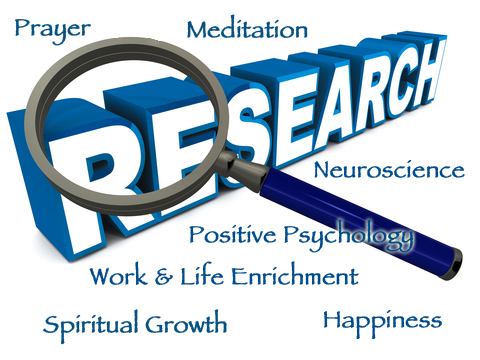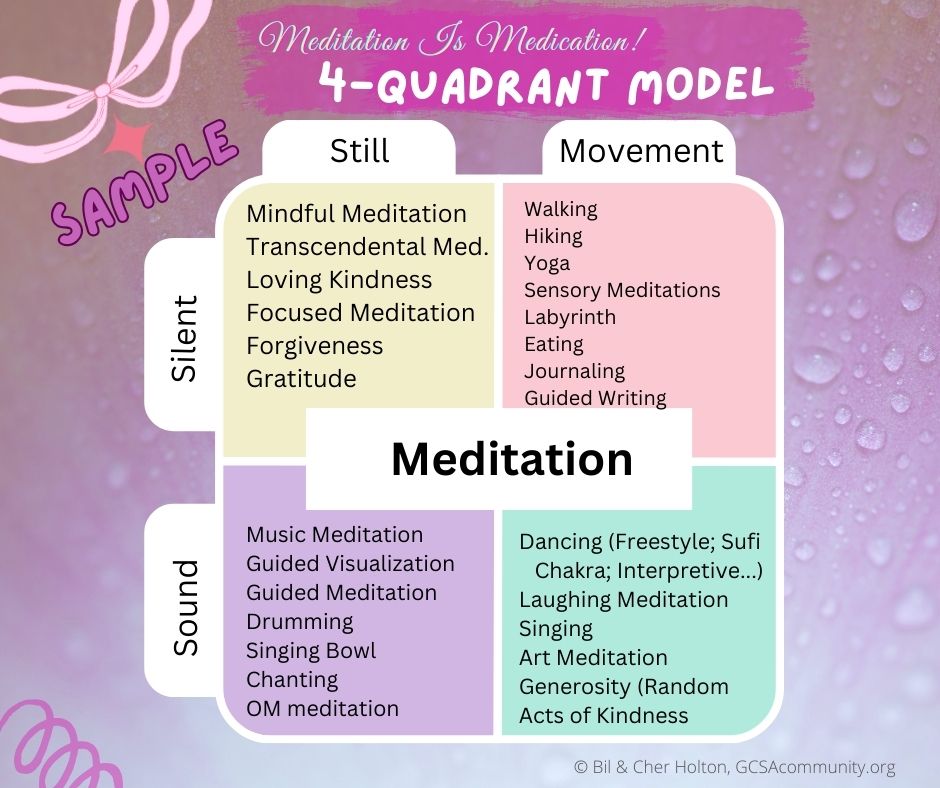
Meditation is (the Best) Medication!

We have been meditators for over 40 years and can say from personal experience that meditation is the super-highway to inner peace, health, happiness, and an enlightened perspective.
We call meditation medication! And if you’ve meditated for any length of time, you know the medicinal benefits of a regular meditation practice.
By quieting the mind and relaxing the body, disciplined meditators experience deep states of mental clarity, relaxation, and higher states of awareness. Meditation allows you to access your higher mental faculties that connect you with what neuroscientists call the “Deeper Self” and what we refer to as the Extraordinary You.
As Inner Focus (that’s another phrase we use for meditation) has become more well-known in the West, scientists have begun to quantify its physical, mental, and emotional benefits in thousands of studies. Researchers have discovered that it’s not just one particular meditation method that is the definitive practice in and of itself. Benefits have been shown in a wide variety of focused awareness techniques.

More and more people are experiencing the benefits of meditation. A great example comes to us in the form of Dan Harris, former co-anchor on Good Morning America and Nightline, and is now a best-selling author and podcaster focusing on the powerful impact of meditation.
Harris dove into his own vulnerability by sharing with the world his panic attack that happened on the air in 2004. He shared his journey from panic attack to drug use to meditation. Here’s just a snippet of what he reported (listen and read more at Dan Harris: How an On-Air Panic Attack Improved My Life):
“By pure happenstance, and despite my lifelong agnosticism, my boss and mentor, Peter Jennings, had assigned me to cover faith. Thus began a strange little odyssey. Leveraging my position as a reporter, I explored everything from mainstream religion to the bizarre fringes of self-help to the nexus of spirituality and neuroscience. The accidental yet enormously helpful end result of all this poking around: I became a reluctant convert to meditation.”

The Research is In -- and It Supports Meditation!
Skip this section if you're not interested in science! Jump to the Meditation Models section by clicking here!
A 2007 national government survey asking about complementary and alternative medicine use in a sample of 23,393 U.S. adults found that 9.4% of respondents (representing more than 20 million people) had used meditation techniques in the past 12 months—compared with 7.6% of respondents (representing more than 15 million people) in a similar survey conducted in 2002.
Meditation is good for children too!
In that same 2007 survey, a sample of 9,417 children showed the following results: 1% (representing 725,000 children) had used meditation techniques in the past 12 months.
We recently explored more current research, and found that meditation enhances the harmonization between the left and right hemispheres of the brain, often referred to as interhemispheric brain synchronization or coherence. Here's how and why:
Brain Hemispheres and Harmonization
- The left hemisphere is typically associated with logical reasoning, language, and analytical thinking.
- The right hemisphere is associated with creativity, intuition, spatial awareness, and emotional processing.
- Harmonization implies improved communication and balance between these two hemispheres, leading to better cognitive, emotional, and perceptual integration.
Here's how Meditation Affects This:
While the idea of "left brain vs. right brain" can be overly simplistic, there is scientific evidence that meditation promotes greater synchronization and cooperation between the two hemispheres. This contributes to improved attention, emotional balance, creativity, and overall mental well-being.
What's In It For You to Meditate?
The following is a partial list of the significant mental, emotional, and health benefits of disciplined meditation:
- In a study of health insurance statistics, meditators had 87% fewer hospitalizations for heart disease, 55% fewer for benign and malignant tumors, 30% fewer for infectious diseases, and 50% fewer doctor visits than those who were not experienced in inner focus techniques. 1
- Disciplined meditation lowers blood pressure to levels comparable to prescription drugs. 2
- Routine meditation increases circulation in beginning meditators by 30%, and in experienced meditators by as much as 65%. 3
- Meditation is endorsed by NIH as an effective intervention for the relief of chronic pain. 4
- 75% of long-term insomniacs who have been trained in relaxation techniques, inner awareness methods, and simple lifestyle changes have less trouble falling asleep. 5
- Meditation lowers blood sugar levels in diabetics. 6
- A group of inner-city residents suffering from chronic pain, anxiety, depression, diabetes, and hypertension trained in meditation techniques experienced a 50% reduction in overall psychiatric symptoms, a 70% decrease in anxiety, and a 44% reduction in medical symptoms.7
- Brain scans show that focused awareness shifts activity in the prefrontal cortex (behind the forehead) from the right hemisphere to the left. Left-prefrontals are usually more enthusiastic, have more interests, relax more, and tend to be happier. 8
- Concentration is greater after 40 minutes of inner work than after a 40-minute nap. 9
- Focused awareness helps chronically depressed patients by reducing their relapse rate by 50%.10
- Disciplined meditators notice more of their surroundings, but react more calmly than those who have little to no inner awareness experience to emotionally arousing stimuli.11
- Those with smoking, alcohol, and eating addictions who have been trained in focused awareness techniques break their addictions with significantly lower relapse rates than those receiving standard therapies.12
- Disciplined inner focus (IF) appears to slow aging. Those disciplined in meditation for twenty years or more were 12 years younger than their chronological age.13
Meditation Models to Add Variety to Your Practice
It's easy to get into a rut with a meditation practice -- which makes it easier to eventually give it up completely. Here are two models designed to help you create new, unique, and interesting practices that will keep you focused and consistent with meditation on a daily basis. We recommend having a few practices that are your "Go-To" practices -- you know, the ones that work for you. Then try adding something different -- and try it at least three times to decide if it is something you'd like to use more often. (3 times: once to see what it's like; second to do it with intention; amd third to see how it really resonates once you understand it.)
Model #2: The MindMap Meditation Model

Here's an example, filled in with a few options. The goal is to create a variety of different types of meditation to choose from.
Bottom Line? Medicate yourself on meditation everyday!
It’s one of the best spiritual practices we know to help you connect with your Real Self, the Extraordinary You … as you master the art of living and walk the spiritual path on positive, practical, prosperous feet.
No Time to Meditate?
Download your copy of our Tip Sheet: The Top 3 Meditation Techniques for Busy People
None of these take more than 10 minutes!
References:
1 D. Orme-Johnson, Pschosomatic Medicine 49 (1987): 493-507.
2 Michael Murphy and Steven Donovan, The Physical and Psychological Effects of Meditation (Institute of Noetic Sciences, 1997).
3 Ibid.
4 J. Kabat-Zinn, L. Lipworth, R. Burney, and W. Sellers, “Four year follow-up of a meditation-based program for the self-regulation of chronic pain,” Clinical Journal of Pain 2(1986): 159-173.
5 Gregg Jacobs, Harvard Medical School, Say Goodnight To Insomnia, (Owl Books, 1999).
6 H. Cerpa, “The effects of clinically standardised meditation on type 2 diabetics,” Dissertation Abstracts International 499 (1989): 3432.
7 B. Roth, T. Creaser, “Meditation-based stress reduction: experience with a bilingual inner-city program,” Nurse Practitioner 22(3) (1997): 150-2, 154, 157.
8 R. Davidson, J. Kabat-Zinn, et al, “Alterations in brain and immune function produced by mindfulness meditation,” Psychosomatic Medicine 65 (2003): 564-570.
9 Reported in The Boston Globe, November 23, 2005
10 J.D. Teasdale, Z.V. Segal, J.M.G. Williams , V. Ridgeway, M. Lau, & J. Soulsby, “Reducing risk of recurrence of major depression using mindfulness-based cognitive therapy,” Journal of Consulting and Clinical Psychology, 68 (2000): 615-23.
11 Michael Murphy and Steven Donovan, The Physical and Psychological Effects of Meditation (Institute of Noetic Sciences, 1997).
12 C.N. Alexander, P. Robinson, M. Rainforth, “Treatment and prevention of drug addiction,” Alcoholism Treatment Quarterly 11 (1994): 11-84; J. Kristeller and B. Hallett, “An exploratory study of a meditation-based intervention for binge eating disorder,” Journal of Health Psychology Vol 4, (1999): 357-363; P.A. Royer-Bounouar,“ A new direction for smoking cessation programs,” Dissertation Abstracts International 50, 8-B (1989): 3428; M. Shafii, R. Lavely, and R. Jaffe, “Meditation and marijuana,” American Journal of Psychiatry 131 (1974): 60-63. 13 R.K. Wallace, M.C. Dillbeck, E. Jacobe, B. Harrington, International Journal of Neuroscience 16 (1982): 53-58.
13 Excerpted from Freedom from Stress, David and Karen Gamow, Glenbridge Publishing (2006).
Image Credits: © Cher Holton; © dreamstime.com



